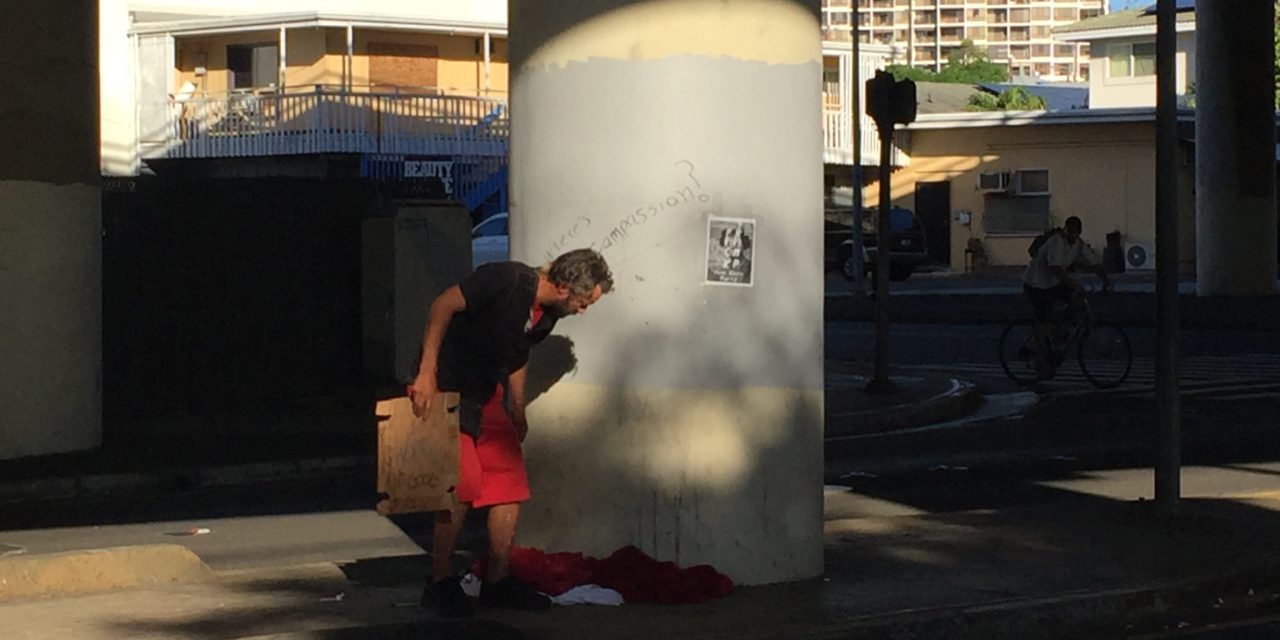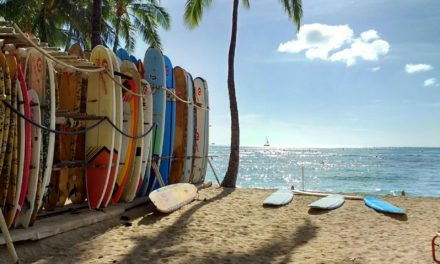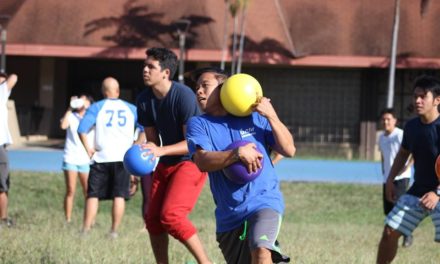By Chris Takahashi | Staff Writer
When our group set out again for one final tally of the unsheltered homeless population in the East Honolulu region of Oʻahu, it was already a quarter past 8 o’clock on a Tuesday evening. I was practically ready to call it a night at this point. Yet, I was undeniably aware that I was the all-too-familiar “straggler volunteer,” having arrived well after sunset for a volunteer event that was scheduled to run from 4 p.m. until 9 p.m.
I had arrived at Kawaikui Park and was greeted in a friendly manner by two Institute of Human Services (IHS) employees. The event was the annual “point-in-time” count that takes place across the state. The count is essentially a snapshot survey of both the sheltered and unsheltered homeless population on a given date. For this year in Hawaii, that date fell on Sunday, Jan. 22, 2017.
The unsheltered count takes place in the proceeding days and the survey requires volunteers to ask homeless individuals where they had slept on that Sunday night. The survey data collected — largely by volunteers — is then submitted to the federal government. In turn, this data determines the allocation of funds that will flow back to the non-governmental agencies that provide services to the homeless population.
Since I was late to arrive, no big group of volunteers was in sight. The group I would be joining was set to return shortly from their foray into the neighborhoods of Hawai‘i Kai, where they had ostensibly spent the better part of the afternoon. Myself, along with another late arrival volunteer, would be “fresh legs” to replace any worn-out volunteers for the last tally of the night.
The group returned via shuttle van to Kawaikui Park, regrouped with snacks and water, and then we were off to survey the Kāhala Mall area. I was given a checklist for documenting important data — whether that be from an individual or family with multiple children. The questions were fairly basic and not too obtrusive, in my opinion, but I was reminded by the IHS workers that conversational engagement was key. And on top of that, there was no silver bullet method to engage a homeless individual to collect that survey data.
Justin Phillips, IHS Homeless Outreach Field Manager, even quipped that the golden rule of this survey business was to try every method or approach of engagement imaginable, albeit in a friendly manner. Over the years, and through much trial and error, IHS has developed some creative approaches to engage the homeless population. Phillips seemed to know every trick in the book.
Stepping out of the shuttle van at Kāhala Mall, our group was off to explore the perimeter of the mall and all accompanying nooks and crannies. Walking down the sidewalk just adjacent to the mall parking lot, our group of five — including one IHS employee — came across a lady walking toward the bus stop. I had just put on my homeless survey hat and gave the lady a snap judgement. To me, she didn’t pass the homelessness test.
From my point of view, I speculated that she had maybe just finished up a shift at a retail store in the mall and was now heading home by bus, wherever that may be. Sure, she was carrying a couple oversized bags, but her neatly brushed hair and glimmer of face makeup convinced me that she was definitely not homeless. I kept walking ahead of the group with another volunteer until we realized that the rest of the group had stopped to talk to the lady.
Looking back, I felt the pangs of embarrassment for this lady being questioned for the homelessness survey. After a few moments, my perception flipped entirely, as I overheard her saying that she was heading back on the bus to Wai‘anae where she would sleep in a shelter that night. Apparently she did work at the mall — as I had suspected — but she was also forthright in the fact that full-time employment does not automatically grant immunity from homelessness. This was a humbling first encounter.
Before wrapping up the night, we did engage with one individual that was less discrete in appearance than the lady we had first encountered. He was lying on a grassy strip outside the nearby Aloha Gas station next to a few empty liquor bottles. He was eating ice cream and attempted to spark a half-burned cigarette to no avail. He told a fellow volunteer that “the king” had bequeathed him the ice cream and beyond such topical conversation would not comply with the survey questions. It’s quite common, as you might expect, for someone to withhold such personal information. This can make the survey work not only challenging but also frustrating.
On a comical note, we met up with another volunteer group at nearby Wilson Park to survey the area. They had briefly engaged with an individual ahead of us, and as we passed the man, he asked, “Are you guys with IHS?” Our group collectively replied yes. Then, in a seriously irritable tone, he proclaimed that he was in fact not homeless. I watched as this well-dressed man with a Tommy Bahama beach chair slouched over his shoulder climbed into his Lexus sedan, only to drive off into the night. Someone in the other group must have deduced that the beach chair ensemble — away from the beach and at night — was a giveaway sign of homelessness. In reality, I think he was just enjoying some quiet time and maybe watching his friends play basketball. We seemed to have flustered the man by inquiring about his homelessness status.
But, as our first encounter demonstrated, homelessness is not always a scarlet letter to be worn at all times in public. One of the IHS workers told me that Ala Moana Mall may even have dozens of homeless individuals throughout the mall at any given time. If they are well-dressed and presentable, the passing observer would never suspect anything. But to the trained eyes of IHS outreach workers, these individuals are not on a perpetual shopping trip with multiple credit cards in their back pocket.
Listening to the IHS workers speak about their outreach efforts was inspiring. The work is tiresome, success may be fleeting, and these individuals that have dedicated themselves to the cause of ending homelessness are truly heroic. To boot, volunteers like myself may come around just once a year to participate in such an event as the point-in-time count, but the real work takes place year round.
To learn more about how you can volunteer with IHS, visit https://ihshawaii.org/get-involved/volunteer. A new volunteer orientation takes place every second and fourth Tuesday of the month between noon and 1:00 p.m. at the IHS Kaaahi Women & Family Service Center in Honolulu.







Interesting read and thought provoking. Thank you.
Thank you so much for reading the article and the kind words, Raphael!